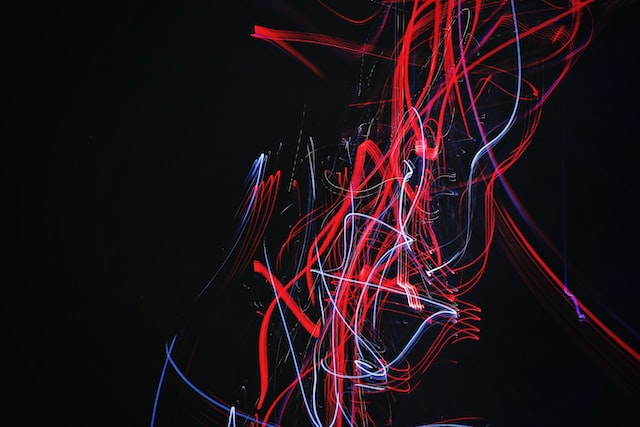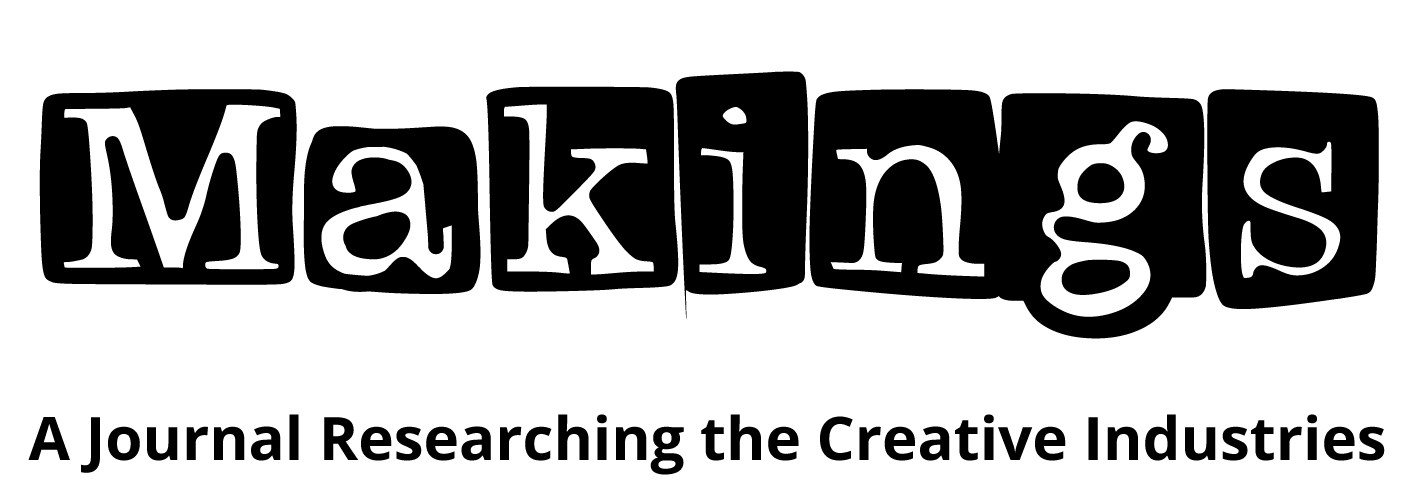
Editorial: Disruption Issue
Kateryna Sivak and Vincent Obia
Download the PDF of this article
ISSN 2752-3861
The contributions to this issue centre around the theme of disruption. Our choice of this theme is, perhaps, rather expected considering the numerous disruptive trends and events that have been happening to and within the cultural and creative industries (CCIs) in recent years. It is these disruptions – and their meaning for the CCIs – that we aimed to capture here. Quite possibly the most obvious of these disruptive events is the global pandemic, which, among other things, forced governments in many parts of the world to introduce rolling lockdowns and social distancing measures. Although not all sectors relied heavily on face-to-face interactions, these closures and restrictive measures have undoubtedly had an unprecedented effect on the entire CCIs (Khlystova, Kalyuzhnova and Belitski, 2022; Snowball and Gouws, 2022). Indeed, in each of the eight articles that comprise this issue, the pandemic is a factor that turned out to be difficult to disregard. Yet, despite the unquestionably turbulent impact of the Covid-19 spread, the latter is by no means the sole focus of the contributions here. Austerity measures, drive for sustainability, digitalisation and convergence, as well as calls for decolonisation, for reducing the precarity of work, and for tackling inequalities – these are some of the other arguably disruptive factors that this issue draws attention to. Whereas many of these issues and trends have been central in the discussions around the repercussions of the pandemic for the CCIs, it is important to acknowledge that none of them is particularly new for the sector. As the contributors to this issue demonstrate in their works, the disruption caused by Covid-19 has often served as a facilitator, a magnifying glass, or a ‘circuit-breaker’, making other, ongoing disruptions ever more evident or putting them on hold. This wide range of disruptions experienced in the CCIs long before the global pandemic is well demonstrated by Dafydd Sills-Jones, Rufus McEwan and Anna Jackson in the first contribution to this issue.
Sills-Jones, McEwan and Jackson consider disruptions and transformations that had already been underway in media production higher education just before the start of the pandemic. Drawing from in-depth interviews with a range of educators across Australia, New Zealand, and Europe, the authors unpack the disruptions educators face in the areas of university-industry relations, teaching practices, and the use of technology. The article points out what is a rather complicated position universities have found themselves in – one that requires them to constantly balance their programmes with what is an often competing industry agenda. These long-standing tensions and transformations, Sills-Jones, McEwan and Jackson suggest, should be kept in mind when exploring the more recent disruption in the field caused by the global spread of Covid-19. Similarly situated in the context of largely pre-pandemic disruptions, the next contribution by Laura Parsons examines how post-2010 austerity measures and welfare reform in the UK have been affecting artists and other workers in the CCIs. Parsons highlights the inability of the current welfare environment to accommodate the precarity and instability that characterise work in the CCIs, noting, inter alia, the repercussions of this for the diversity and inclusion within the sector. Parsons argues for a state-backed safety net that removes barriers to entry and provides for adequate welfare.
Offering an opportunity to make a connection between disruptions before and after the start of the pandemic, the issue continues with a contribution by Maica Gugolati and Hanna Klien-Thomas, which centres around the pandemic-caused transformations in the Notting Hill Carnival in 2020 and 2021. Gugolati and Klien-Thomas use the ‘digitalscape’ framework to investigate how digitality shaped experiences of the Carnival under Covid-19-related restrictions on face-to-face events. In addition to discussing opportunities as well as constraints of the Notting Hill Carnival’s forced move online, the article points out the implications of the Carnival’s digitalisation for reinforcing existing power relations and social inequalities. This ability of the pandemic to intensify pre-existing issues is also echoed in the next article by Tiffany Bale. Bale considers the ability of film and television costume workers in the UK to improve their working conditions through unionisation. The contribution describes how an increased workload, caused by a spike in demand for film and TV productions during the pandemic, encouraged costume workers to deploy collective power in negotiating precarious work in the new normal. Bale’s findings demonstrate that whereas workers’ perceptions of their ability to invoke broad change within the industry remain rather sceptical, they believe in the ability of unionisation to make a more localised impact on their individual careers. The article calls for greater research attention to the power that costume workers have as agents of change in their struggle with amorphous production companies.
Questions of power are also present in the following contributions by Sophie Swoffer and Leona Heimfeld. Sophie Swoffer takes a feminist approach to video editing through an engagement with ‘glitching’ to produce her performance titled It’s Us! as a way of celebrating the disruptive messiness of femininity. Swoffer uses the practice of vidding, which involves combining old footage of Hollywood actresses at different stages of their careers with her own filmed work. This in turn allows the creation of a feminist alternative to the predominantly patriarchal classical Hollywood narrative, one that is largely produced based on the male gaze. Thus, the article highlights new ways of feminist digital performance practice and their potential to redefine dominant approaches to viewing, while also serving as an example of the pandemic’s impact on the practices of performance makers. From this focus on production, Leona Heimfeld takes us into media consumption cultures. Heimfeld examines the distracted spectatorship that Netflix facilitates through its ‘Pause’ button, which encourages consumer emancipation and choice among young women and girls. The contribution also explores the nuances between the concepts of distraction, interruption, and disruption. Heimfeld articulates the ‘Pause’ button as part of the control ensemble that Netflix provides, enabling the streaming giant to mine user data and nudge users towards greater consumption.
Another example of rethinking audience engagement is offered in the work of Marley Treloar, who explores how cultural organisations can better work with community partners, presenting alternative ways of working that disrupt barriers to access evident in the Gallery, Library, Archive, and Museum power structures. Treloar reflects on the work of Recycle Archaeology, an archaeological reuse initiative, and its partnership with the Kingston Museum, to highlight ways of expanding access to archaeological objects both physically and digitally. Treloar’s calls for cultural organisations to adopt new ways of audience engagement that encourage cross-sector collaborations and community participation resonate with the final contribution to the issue by Ellen Lillywhite. Lillywhite considers the disruptions facing the heritage sector – in particular, museums, archaeological sites, and archives – and how the ‘spectral metaphor’ can be used to navigate these disruptions in the sector. Based on the links between the concepts of ghosts, place, and emotional connection, Lillywhite examines how ghost walks can help the heritage sector manoeuvre tensions around climate change, the global pandemic, and calls for decolonisation, diversity, and inclusion.
In addition to these scholarly articles, for the second time in the history of our journal, we have included Studio contributions – these are thought-provoking less traditional submissions such as shorter think-pieces, observations, and experimental works. For the disruption theme, we accepted three contributions as Studio pieces, which we released earlier. In the first such piece, Emily Scarrott writes a series of letters to express solidarity with an unnamed disruptive presence. Scarrott uses this style to highlight precarious working conditions and marginal spaces in academia and the arts, and how these spaces might be negotiated as tools of activism to disrupt traditional flows. The second piece by Andrea Jaeger addresses the case study element of a project that engages with the photographic phenomenon of ‘light fogging.’ Jaeger explores fogging as an unintentional exposure that disrupts the seamless flow of image production, where the image is a photographic practice done by an LED digital printer and the artist-researcher. In the third and final contribution to the Studio section, James Walker presents the idea of a mobile ‘moveseum’ called the D.H. Lawrence Memory Theatre, which curates the writer’s life through artefacts, both in physical and digital formats. The Theatre disrupts not only our notion of the traditional museum but also of pedagogical practices, seeking to upset the ways by which we transfer and test knowledge.
Overall, the contributions to this issue explore the wide-ranging disruptions faced by various stakeholders in the cultural and creative industries. Whereas the global pandemic has certainly caused turmoil in the sector, it is by no means the first, nor the only disruptive factor that requires immediate attention. The collection of articles here, as well as the three Studio pieces, interrogate these numerous disruptions, and the general diversity of responses to our initial call for contributions, we believe, indicates a rather high level of interest that exists around the theme and contributes to our collective understanding in this regard.
We welcome submissions for future issues from researchers around the world interested in the intricacies and complexities of the creative and cultural industries. More details about the focus of the journal and the contributor guidelines can be found on our website.
References
Khlystova, O., Kalyuzhnova, Y. and Belitski, M. (2022) The Impact of the COVID-19 Pandemic on the Creative Industries: A Literature Review and Future Research Agenda. Journal of Business Research, 139, pp. 1192-1210. Available at: http://doi.org/10.1016/j.jbusres.2021.09.062
Snowball, J. D. and Gouws, A. (2022) The Impact of COVID-19 on the Cultural and Creative Industries: Determinants of Vulnerability and Estimated Recovery Times. Cultural Trends, ahead-of-print, pp. 1-24. Available at: http://doi.org/10.1080/09548963.2022.2073198
